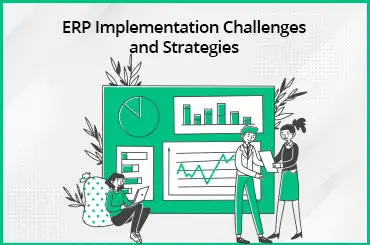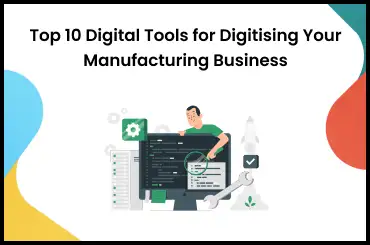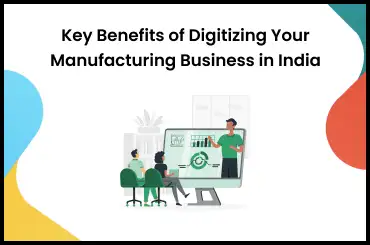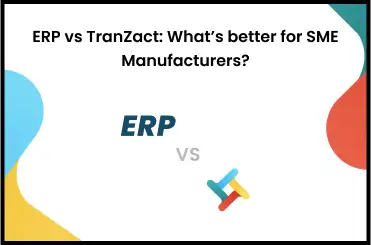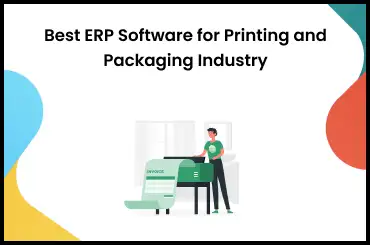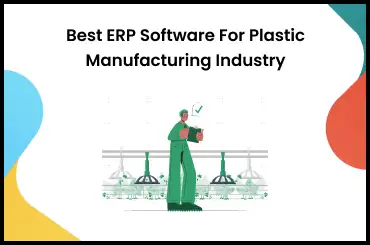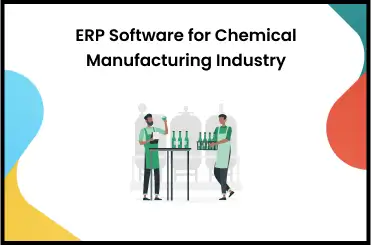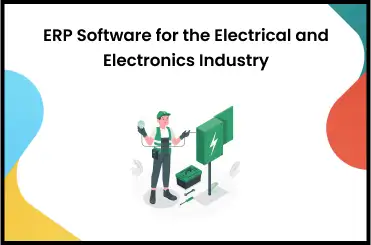Enterprises usually use these two methods, ERP customization and ERP configuration, when they want to integrate a new inventory accounting system into their business environment. However, both methods have their own purpose but which ERP implementation is better and why? In this blog post, you will understand the difference between ERP customization vs configuration and its advantages and challenges in detail.
What is ERP Customization?
ERP customization is a process to make changes in the existing enterprise resource planning software as per the company's needs. The customization in ERP systems may include writing new scripts, creating need-based dashboards, access level management, working processes, and many more things. It is useful to change the functionalities of the module as per the specific industry requirement. You can ask your ERP solution provider to integrate third-party or internal applications like demand forecasting and material requirement planning to make your accounting process fast and easy. Here, you have to note that the developer will need all the details of the business requirements. Hence, ERP customization may become an expensive and time-consuming process.
Pros & Cons of ERP Customization
ERP customization implementation has its own advantages and complications. Let’s check them.
Pros Of ERP Customization
- You get modified software that is specially designed according to your business needs.
- ERP Configuration provides the freedom to add the custom ERP module and functionality to your standard ERP system.
- Once custom ERP software meets your requirements, it saves you valuable time in testing and promoting your business.
- ERP customization helps you stay ahead of the competitors as you have everything in the process and managed way.
- The probability of errors occurring is minimal due to less human involvement in the testing process.
- Customization is a stable choice for medium and small manufacturing businesses.
Cons Of ERP Customization
- Custom ERP software is usually an expensive and time-consuming process to develop due to the different requirements of enterprises.
- It is difficult to search for a skilled development team that has deep technical knowledge in ERP customization and the domain.
- Sometimes, meeting a budget for ERP customization also causes delays.
- Apart from ERP implementation, you may require strong and expert internal sources for maintenance.
- It is challenging to synchronize your data when your ERP software is getting updated.
Examples of ERP Customization
ERP customization examples like the addition of dashboard widgets, form layouts, and customization of specific integration will let you know about this utility in depth. Here are a few of the best examples of ERP customization to use them more effectively.
- Specific integrations like layouts and widgets in the growing process.
- Compliance with Indian manufacturing regulations.
- Enhanced local supply chain integration.
- Localized financial management adaptations.
- Custom reporting for market insights.
- Mobile access for remote management.
When to Choose ERP Customization?
ERP customization helps with the following:
- When you spread your business in multiple countries, cities, or various warehouse management and are scaling fast.
- When you are unable to achieve the required result with the ERP configuration software.
- When you need easy and cost-effective optimization in your standard ERP solution.
- When you need consistent tracking of the workflow of your manufacturing business.
- When you need a dedicated dashboard and features for each department.
What is ERP Configuration?
ERP configuration is the process of integrating the ERP system with the default features with basic changes. These modifications may include time zones, industry-specific workflow, currencies, data analytics, language, and many more. Here, you can edit the values and functionality within the preloaded ERP software while choosing the unique functionality in the configuration process.
Pros & Cons of ERP Configuration
Enterprises mostly choose ERP configuration due to its flexibility of integration into the existing system. However, it has some pros and cons that you need to consider during the implementation process according to your business needs.
Pros of ERP Configuration
- There is no need to change the source code.
- It offers easy integration of basic functions in the existing ERP system.
- It takes less time to implement and easy ERP data migration in your work environment.
- ERP configuration helps you meet industry standards.
Cons of ERP Configuration
- Configuration does not allow the integration of third-party applications.
- New modules can’t be added through the ERP configuration process.
- You might also need a specific license to configure your existing ERP.
Examples of ERP Configuration
Below are some ERP configuration examples.
- Specific objects and fields are set up according to your business process.
- Changes in different levels using your internal terminology
- Modifying system properties while customizing the interface and reports to align with current business needs.
When to Choose ERP Configuration?
There are certain situations where choosing ERP Configuration could be a more beneficial choice:
- When you need basic tools to improve the efficiency of your business.
- When you have a small and medium-sized businesses.
- When you want to meet ERP standards with no major changes in rules.
- When you want to have a minimal process to upgrade and automate your workflow.
- When you want an easy-to-manage ERP solution for your company with less complexity.
- When you require a swift ERP system with fewer settings and parameters.
Difference Between Customization And Configuration of An ERP System
If we talk about ERP customization vs configuration, its important to understand their differences well. ERP customization is best suited for SME, which needs to maintain a vast amount of data in the scaling process. But, ERP configuration is suitable for businesses that just want to improve their existing ERP with some basic changes.
How To Get The Most Of Your ERP Solution?
While standard ERP software is itself complete, you will still need additional functions and modules to improve the efficiency of your business process. It can cause extra expenses to your existing ERP system whether you want to configure it or go for the best ERP customization. Therefore, many enterprises prefer to choose both configuration and customization, which is efficient and cost-effective as well. Further, to get the full functionalities of ERP solutions, you must take care of the following points.
- Discuss with all the decision makers internally to identify the problems.
- Outline your requirements and all the expectations.
- Choose the right ERP vendor comparing prices.
- Keep your objectives transparent with the ERP vendor to get an effective solution.
- Make a smooth training process for easy learning about important ERP tasks.
- Keep your system updated and take care of data security.
- Scale your business growth from time to time after ERP implementation.
- Keep upgrading from time to time to increase the team and business productivity.
Scale Your Manufacturing Business With TranZact
ERP implementation is an important process for any business. Some require ERP customization, which means a new solution with innovative modules and functionalities. Whereas, ERP configuration is required when you need the system without impacting the core ERP features. But ERP is not always the best choice for an SME.
For an Indian SME manufacturing business, a software like TranZact would be a better choice. TranZact is a cloud based software offering a personalized business solution for small and medium Indian manufacturers. Unlike an ERP, TranZact only has the modules that a SME Manufacturing business needs - production, planning, sales, purchase and inventory. The interface of TranZact is easy and it can be implemented in 14 days with minimum interruption to your business.
FAQs
1. What are the things to consider for ERP customization or configuration?
The things you need to consider for ERP customization or configuration are understanding business complexity, industry standards, and budget planning. You also consider team and business requirements, processes within the company, training requirements, nature of work, and frequency of updates.
2. What is the customization process in ERP?
The process of personalizing the ERP software using a new source code is called customization in ERP. It is beneficial when you need the best ERP modules and functions to easily track your business.
3. How is an ERP configured?
- Adjustment of settings and parameters within the ERP software to align with specific business needs.
- Fetching the data from the existing resource without compromising the source code.
- Integration of new functions to improve the efficiency.
- Implementation of the testing process within the business environment.
4. What is the difference between ERP customization and ERP configuration?
ERP customization includes the modification of the source code to introduce new and unique functionalities. However, ERP configuration is the process of upgrading the existing ERP without impacting the source code.
5. What are 7 steps for successful ERP implementation?
The seven steps for successful RRP implementation are as follows:
- Gathering the critical information your company needs.
- Designing process as per the workflows and requirements of the business.
- The development phase includes configuring and customizing the system.
- Restoring the data from multiple sources.
- Testing your new ERP software.
- Identifying the issues and troubleshooting.
- Making the ERP software live for your business.
6. What are modules in ERP?
The components that are used to track the various business processes are called modules. A few examples of ERP modules are human resources, finance and accounting, supply chain management, and CRM.
7. What is meant by ERP architecture?
ERP architecture is the combination of all the essential equipment required to set up a well-managed Enterprise Resource Planning system in a company. It may include data servers, systems, software, security, reporting, and many more.







